
Ruined King: A League of Legends Story Review
I am squarely in one of (I imagine) two very distinct camps of players when it comes to playing Ruined King: A League of Legends Story after it was shadow dropped unexpectedly. That is, there's one group of players that are League of Legends veterans who are eager to engage with the IP in new avenues such as this, alongside another who instead sees it as a sort of gateway to the franchise while having little prior exposure to League itself.
Admittedly, I am a League of Legends neophyte.
I've picked up a few details over the years through general osmosis. I've seen fanart of characters like Jinx and Lux. I know what a Yordle is, kind of. I know the layout of League's main map and the general objective. But I've never played a League game and likely never will. However, I am a fan of RPGs (clearly) and have enjoyed some of Airship Syndicate's previous work such as Battle Chasers: Nightwar.
When Ruined King was the first title announced under the Riot Forge publishing label two years ago and was slated to be developed by Airship Syndicate, I was immediately interested despite my lack of League knowledge. A turn-based RPG from a developer who had succeeded in the framework before was enough to get me on board, and I was always tangentially interested in learning more about League of Legends anyway. In a way, this seemed like a perfect opportunity.
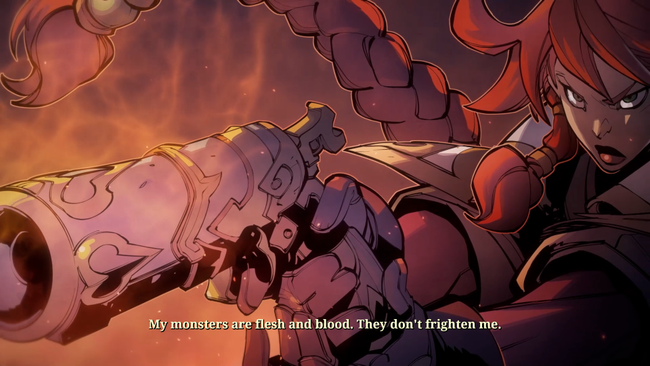
Ruined King takes place largely in the town of Bilgewater and some surrounding locales shortly after Sarah Fortune has taken the reins of the city from its previous self-appointed ruler, Gangplank. However, Fortune must now face a new undead threat from the nearby Shadow Isles, as well as a phenomenon known as the Harrowing, all while she attempts to consolidate power and respect amongst denizens of a seemingly lawless town. Naturally, several other champions end up involved in the conflict for their own personal reasons, creating a sort of emergent alliance as they come together to tackle the threat of Ruination and come to learn about its origins.
While references to events, locations, and off-screen characters surely flew way over my head, the narrative setup here is a fairly simple one that I found easy to engage with regardless. Even without any pre-conceptions of what to expect, or even the general demeanor of each eventual party member, almost all of them (sorry Braum) immediately endeared to me with their unique characterizations, motivations, and occasional friction between them in moments when their goals didn't perfectly align.
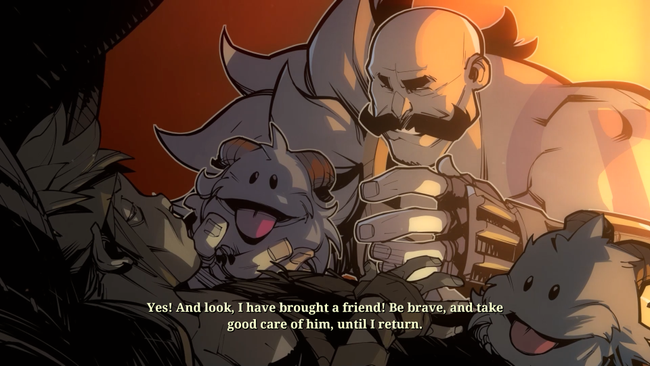
The narrative does come across as a bit manufactured as the game attempts to justify how these various heroes end up aligned together in a somewhat similar goal. While party-based RPGs often have some semblance of convenience to have the cast become allied, it feels especially transparent in Ruined King. While some characters like Miss Fortune and Illaoi get enough screen time and dialogue to feel appropriately contextualized, others like Yasuo feel superficially appended. Yasuo gets one location that touches on his backstory which abruptly resolves itself and feels relatively isolated and independent of the story at large. Ahri has a similar angle where the narrative puts some emphasis on a specific character trait of hers which becomes important for about 10 seconds before also resolving itself near-immediately.
While the overarching plot itself isn't groundbreaking, and some of the cast interactions are almost comically terse, there's enough compelling storytelling here to latch onto even without any prior League knowledge heading in. While most of the cast only approach a small amount of nuance in their blunt dialogue and have a tendency to lean towards being quite bland, there's a fun dynamic between the party that only strengthens as one gets further into Ruined King's 30-hour run time. While the simple and straightforward story and characters didn't turn me away, what I latched onto most fervently was Ruined King's approach to turn-based combat.
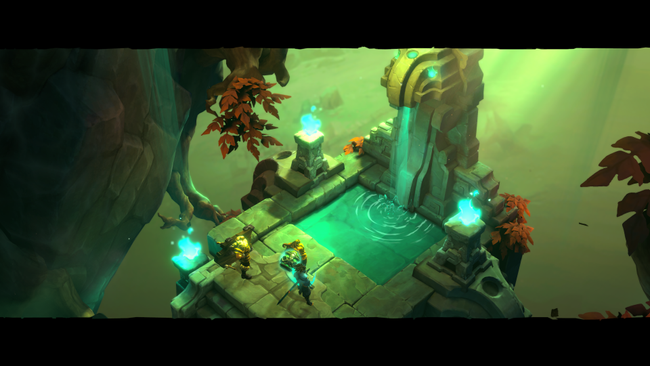
Ruined King is clearly built in the mold of Nightwar with a similar art style, rhyming gameplay framework, and even some borrowed animations. However, while Nightwar played as a hybrid of a mostly conventional turn-based RPG along a series of randomized dungeons consisting of tiled rooms, Ruined King instead tries to adopt League mechanics into the combat system itself. At least, that's how I perceive it without being equipped with the knowledge firsthand.
It's admittedly difficult to fully judge how effectively and faithfully each League Champion has been adapted to fit into the turn-based mold of Ruined King when I don't have the experience of their individual playstyles from the MOBA game. Regardless, Ruined King features six playable party members, presumably some of League's most popular, and manages to clearly carve out a very specific role and gameplay style for each. Yasuo focuses on dealing direct damage, Pyke utilizes both damage and debuffs such as bleed and poison, Ahri and Illaoi are both focused on more hybrid-healing type roles, while Miss Fortune and Braum serve as sort of rogue and tank archetypes respectively. Airship managed to make each character feel like a unique set of tools that must be utilized differently to maximize their effectiveness, which helped prevent the combat from ever feeling too stale.
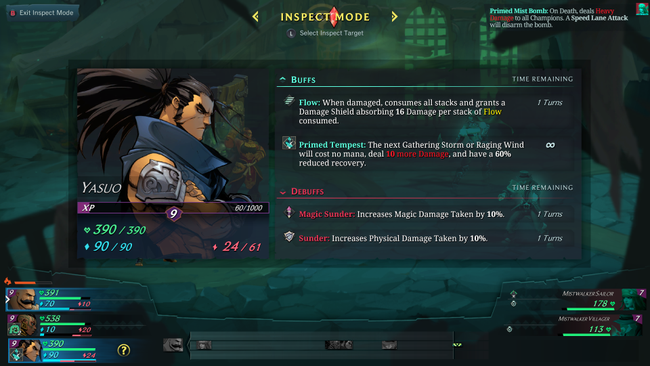
However, boiling the party members' roles down to these wide-scoped archetypes doesn't quite do justice to how much care and thought has seemingly gone into defining each character and the tactics used to play them effectively. While some of Ruined King's battle mechanics such as Overcharging MP with successful attacks, effects such as Sunder, and building up an Ultimate meter are borrowed directly from Nightwar, several mechanics are borrowed from League as well. For instance, Yasuo's basic attack will charge Steel Tempest, a buff that augments many of his more powerful abilities. Miss Fortune builds up stacks of Strut, which increases her speed for as long as she evades taking damage. Ahri utilizes Essence Theft to heal allies while still being on the offensive, Braum can debilitate enemies by stacking Concussion, and so on.
Identifying how each character's unique mechanics synergize effectively with their abilities as you unlock them never ceased to feel rewarding. In general, Ruined King has a plethora of bespoke buffs, debuffs, and general mechanisms that are specific to each ally or enemy rather than just relying on the typical stable of haste, poison, bleed, slow, and the like -- though those are also present. While the party members each have these particular mechanics that their kit of abilities is cleanly designed around, often many enemies often do as well. Many of these systems revolve around incorporating a uniquely defining element of Ruined King's combat: the Lane system.

Like many similar RPGs, including Nightwar, Ruined King features a sort of timeline called the Initiative Bar that indicates which units will act in which order. Certain abilities will activate instantly while others will delay the unit's action until later in the timeline, with the most powerful abilities naturally taking the longest time to prepare. Specific buffs such as Haste and Slow will affect the turn order, while other abilities can push enemy turns out to delay their attacks or pull ally turns in to activate more quickly. In this manner, it's a tried-and-true, familiar setup that has worked in several other games.
However, the Lane system is where several additional wrinkles are incorporated into how the Initiative Bar works. While the naming may seem like a cynical shout-out to League of Legends' well-known map layout, the implementation is actually quite clever and adds another dimension to the combat system that was perhaps lacking in Nightwar. While Instant abilities will always activate in the same way, Lane abilities -- which cost Mana -- can be activated at three different levels: Speed, Balance, or Power. So after you select a Lane ability to use, you also always select which Lane to cast that ability in.
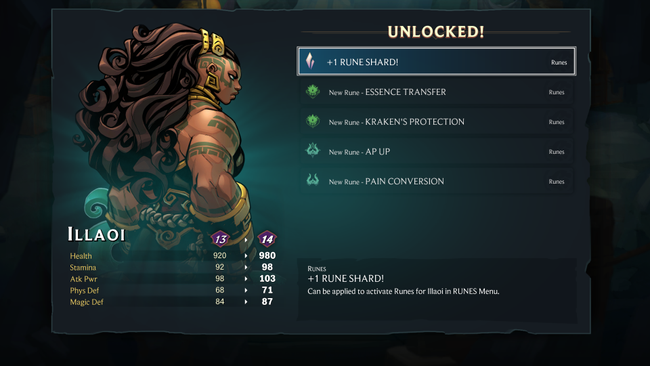
At first, selecting between Speed, Balance, and Power is a simple trade-off. Casting an ability in the Speed Lane will allow that ability to activate more quickly at the cost of reduced overall effectiveness. Conversely, casting in the Power lane will result in the highest amount of damage done or healing performed at the cost of taking a longer time to prepare. However, certain enemies may have specific defenses towards attacks from certain lanes, such as quick wolves that have a high chance of evading any Balance or Power attack, or tanky brutes that must have their guard broken by being hit by a Power attack first. In this way, players that take care to identify the specific weaknesses of each enemy will find themselves with a much easier time compared to those who don't take these details into consideration for their strategy.
Lastly, the Hazard system (and some enemy abilities) will also come into play when determining which Lane to cast abilities in. Occasionally, specific regions of the Initiative Bar will be occupied with either a beneficial effect or a debilitating hazard. When selecting an ability to cast and which Lane to cast it in, the timeline will indicate whether the party member or enemy will end up being affected by the Hazard. While these effects seem relatively minor on the Normal mode for most encounters, it's easy to envision how smart plate-spinning of the Lane system, Hazard timing, and aligning character builds with enemy weaknesses would need to be considered when playing on one of the more challenging difficulties. Altogether, I found the combat experience of Ruined King to be its most impressive facet.
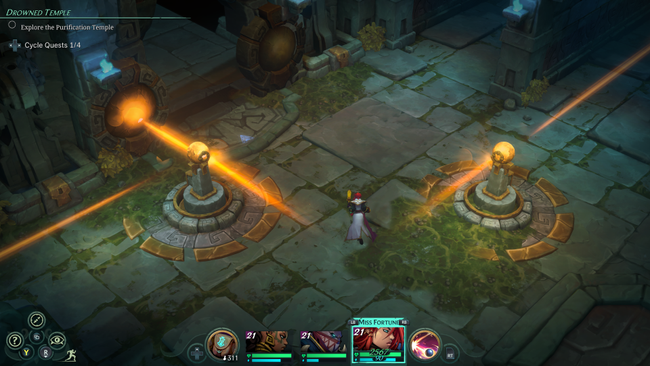
Non-combat gameplay in Ruined King is comprised of relatively simple dungeon layouts with some basic puzzles and an allotment of side objectives, such as bounty targets and a smattering of side quests. Since the randomized dungeon locations of Nigthwar are gone, the party will instead be encouraged to revisit old areas in order to track down an optional boss or gather an item for a quest objective. While running around Bilgewater early on can get a little bit draining due to the lack of fast travel for the first few hours, new gear and abilities are doled out at a brisk pace so that I was always eager to try to change up my party composition or try out new builds for old party members while not progressing the main story objective. An accompanying Arena, Enchantment system, and even Fishing minigame are fun enough diversions that bolster the experience, with no individual component feeling too bloated or too insubstantial.
Unfortunately, the largest detriment to my enjoyment of Ruined King was simply the number of bugs and level of unevenness that I encountered during my playtime, even after one major bug-squashing patch. Early on these were minor inconveniences such as the map not updating when I opened a chest, but eventually grew to issues such as not being able to select targets in battle or even having a black screen during combat. Specific quests would not properly update in the Journal when completed while specific items would seemingly fail to spawn in other instances. Reports of crashing on the console versions of the game have also been prevalent, though I was lucky enough to avoid that on the Steam version of the game. While I anticipate these will be ironed out over time, it does make me wonder about the decision-making behind releasing the game unannounced in this state.
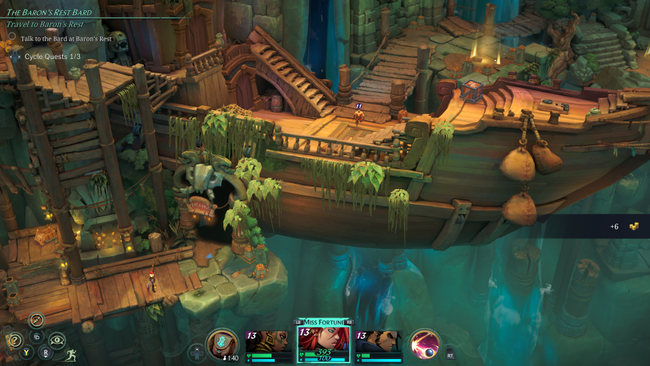
Despite being woefully ignorant of most things about League of Legends going in, I found myself at no real disadvantage when it came to enjoying most aspects of Ruined King. A distinct and deep combat system with a unique mechanical hook, interesting puzzles and stylish art, and a well-defined cast of characters and setting were enough to get me invested in an IP I had largely ignored up until this point. Despite some issues with a lack of polish, Ruined King deserves a look-in for any fan of RPGs, independent of how familiar they are with the source material.